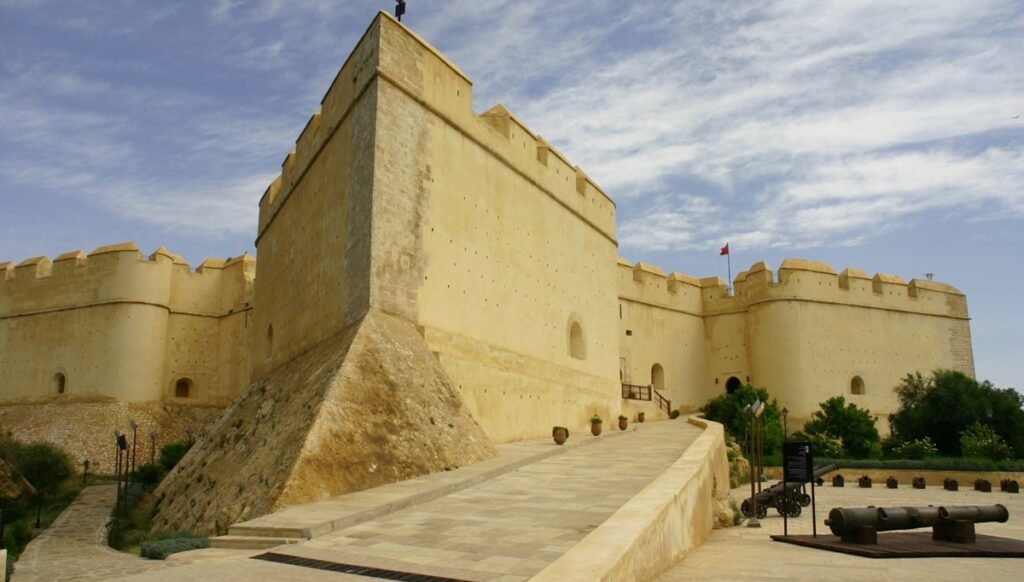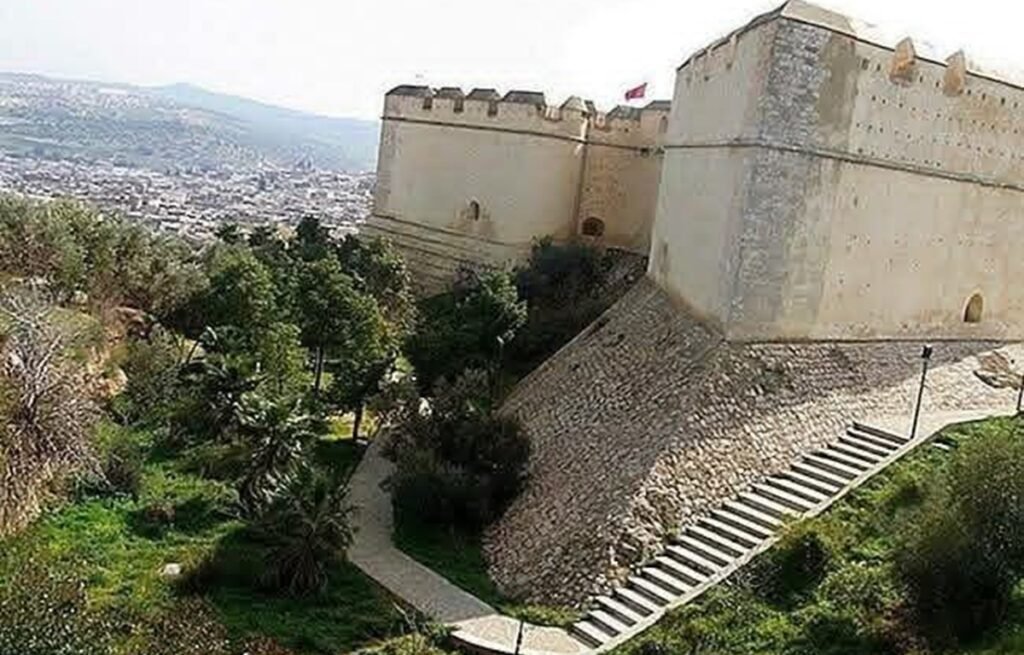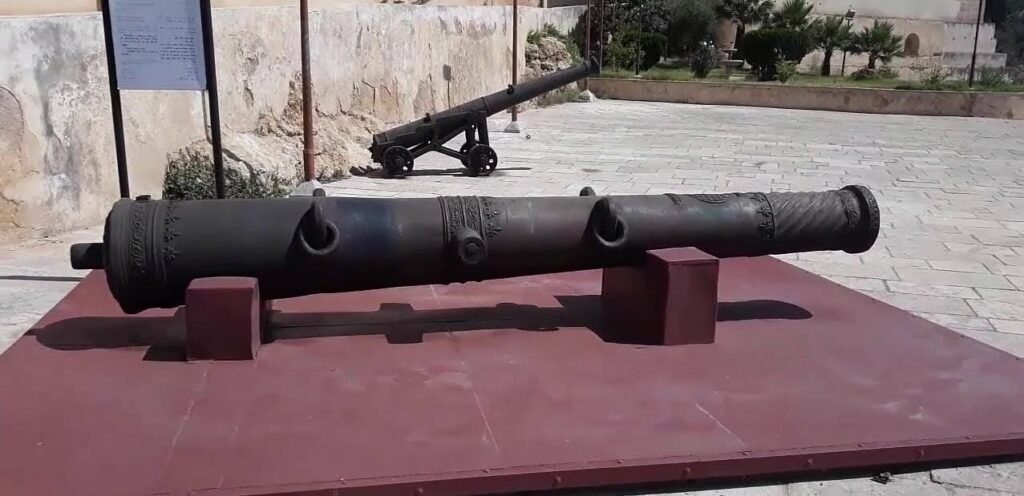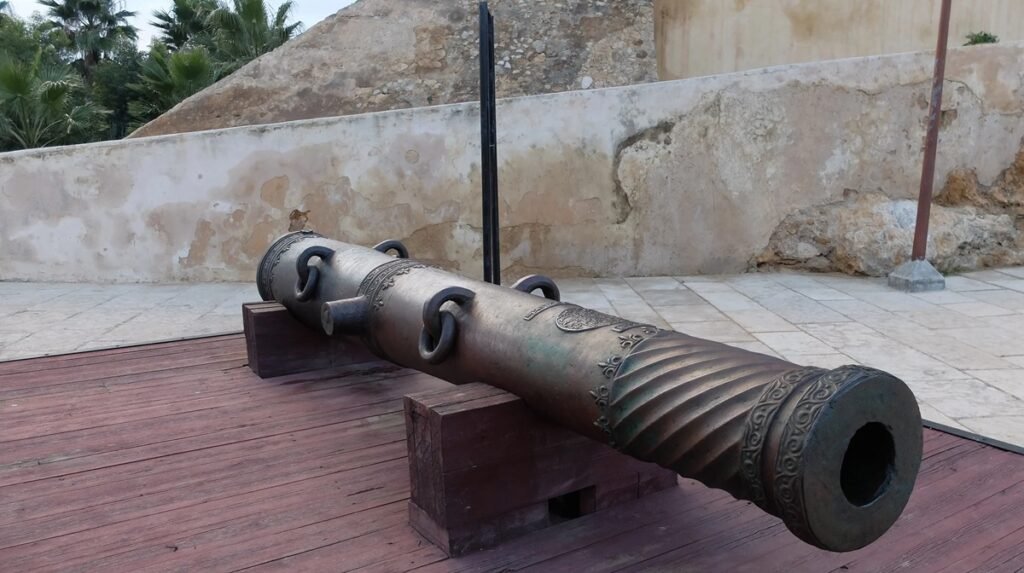Military history in the heart of Fez: The Arms Museum in Borj el-Shamali

The Arms Museum in the northern tower of Fez is one of Morocco's most prominent historical and cultural landmarks. It is not just a museum displaying ancient artifacts; it is a military fortification that bears witness to a rich history, telling the story of Moroccan military development throughout the ages. Located atop a hill overlooking the old city, the museum is part of Fez's historic fabric, which has been designated a UNESCO World Heritage Site.
Origin and history of the tower
The origins of the northern tower date back to the 16th century, specifically to 1582 AD, when it was ordered by the Saadi Sultan Ahmed al-Mansur al-Dahbi. The purpose of building this tower, along with a group of other towers, was to create a strong defensive belt to protect the city of Fez from any external threats, especially Ottoman attacks.

The design of the North Tower is inspired by 16th-century Portuguese fortresses. It is believed that Portuguese prisoners participated in its construction, explaining the clear European influence in its architecture. The tower features massive ramparts and thick walls designed to withstand artillery shells, making it a symbol of the city's defensive strength. The tower was expanded during the reign of the Alaouite dynasty, increasing its military significance.
Over the ages, the North Tower has served various roles, serving as a military fortress and a prison during the French Protectorate, before being restored and converted into a museum in 1963.
Museum Contents: Treasures from the History of Moroccan Weapons
The Borj North Museum houses a vast collection of weapons documenting Morocco's military history. It houses approximately 8,000 artifacts, of which approximately 3,000 are on display. The exhibits range from melee weapons, firearms, and armor, and include pieces dating back to various historical periods, such as the Almoravid, Almohad, Saadian, and Alaouite eras.
The most prominent exhibits in the museum:

Firearms: The museum houses a collection of antique guns and cannons that demonstrate the development of firearms manufacturing in Morocco. One of the most famous pieces on display is the "La Mimouna Cannon," a massive cannon measuring five meters long and weighing 12 tons, used in the famous Battle of Wadi al-Makhazin.
Bladed Weapons: The museum displays a collection of swords, daggers, and shields that highlight the skill of Moroccan craftsmen in traditional weapon-related crafts, some of which date back to the 12th century AD.
Ornate Weapons: Some of the pieces on display feature beautiful Moroccan motifs, which were used for decoration and display, reflecting the cultural and artistic dimension of weapons in Moroccan heritage.
The cultural and educational role of the museum
The Borj North Museum's role is not limited to displaying weapons; it also extends to preserving Morocco's military heritage and reviving traditional crafts associated with arms manufacturing. The museum also serves as an educational and cultural center, welcoming thousands of visitors annually, both Moroccans and foreign tourists, offering them a glimpse into Morocco's military history and its role in the region.

Despite its importance, the museum suffers from a lack of official tourist interest. It is not fully integrated into the city's tourist itinerary, making most visits individual rather than part of organized tours. Nevertheless, the museum remains an essential destination for anyone interested in Moroccan military history and culture, serving as a living record that tells the story of a nation's resilience and strength throughout the ages.





